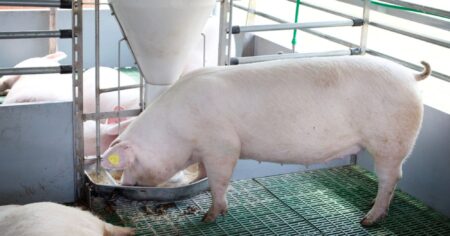Mexico’s agriculture ministry has confirmed a new case of the flesh-eating New World screwworm in the northern border state of Nuevo León.
According to Reuters, the infected calf, traced to a herd from southern Mexico, was intercepted in Montemorelos, about 60 miles south of Monterrey. Mexican officials reported that the larvae found were dead or dying due to mandatory antiparasitic treatments, including ivermectin.
This marks Nuevo León’s second case in two weeks, although Mexico’s government said the incidents are unrelated. U.S. Agriculture Secretary Brooke Rollins confirmed that the latest case occurred roughly 100 miles farther north than the last and described it as “an isolated incident.”
“We will have boots on the ground within hours to verify the situation,” Rollins said on X.
🚨 𝐍𝐖𝐒 𝐓𝐇𝐑𝐄𝐀𝐓 𝐔𝐏𝐃𝐀𝐓𝐄 🚨
Today, I was alerted by the Mexican government that a new case of New World Screwworm (NWS) was detected in Mexico, 170 miles from our southern border. At this time, we believe this to be an isolated incident and it is ~100 miles further…
— Secretary Brooke Rollins (@SecRollins) October 6, 2025
Since May, the U.S. has kept its border largely closed to Mexican cattle imports in response to the outbreak. Mexico has recorded more than 6,700 screwworm infestations since November 2024 — a sharp increase from the previous monitoring period.
To limit further spread, Mexico’s agriculture ministry requires that all cattle receive ivermectin 72 hours before transport, under supervision by the International Regional Organization for Animal and Plant Health.
The USDA warns that screwworm larvae can infest livestock and humans, entering through open wounds and feeding on living tissue. Residents and ranchers along the southern U.S. border are urged to check animals for draining or enlarging wounds, discomfort, or visible maggots, and to report any suspected cases to local animal health officials.
The U.S. Department of Agriculture announced in August 2025 its “NWS Bold Plan”, a five-part initiative to prevent the New World screwworm from crossing into the United States. The strategy includes $100 million in innovation funding for research on sterile-fly production, traps, and treatments; construction of a domestic sterile screwworm facility at Moore Air Force Base in Edinburg, Texas; and expanded border surveillance through “Tick Riders” and animal health experts to monitor wildlife movement.
It also features enhanced early detection, including trained detector dogs and increased trap deployment across southern states, along with cross-border coordination with Mexico’s SENASICA to contain the pest and strengthen reporting and control measures.
While no livestock cases, and only one human case has been detected in the U.S., federal agencies stress that early vigilance is critical to protecting the nation’s livestock and food supply.












